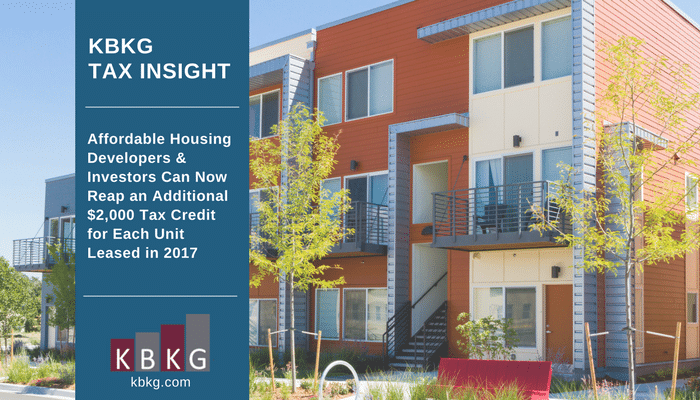
Affordable housing developers benefit from various tax credits from Low-Income Housing Tax Credits to Rehab Credits, yet they often fail to claim a tax credit that is geared towards their developments: the Section 45L Tax Credit. Section 45L is a commonly overlooked section of the tax code that was recently renewed and rewards energy efficient dwelling units with a $2,000 federal tax credit per eligible unit. Understanding how this specific tax credit works can lead to improved returns for both affordable housing developers and investors, especially since affordable housing typically requires an investment in energy efficiency.
Why is the credit often missed or overlooked?
Part of the reason that 45L tax credits are often missed is that the multifamily industry was originally not considered eligible for this tax credit when it was first introduced into the tax code in 2006. Initial guidance on the tax credit required that homes had to be sold to be eligible, and this tax credit was originally referred to as the “homebuilder tax credit.” However, the IRS clarified its initial guidance in 2008 by also allowing leased homes and units to be eligible for the credits. With the modified guidance, units within low-rise multifamily buildings became eligible for this tax credit.
Additionally, the tax credit has always been a tax extender which has been extended retroactively many times since it was first introduced. Given that the tax credits had constantly expired only to be extended retroactively later made it challenging for developers to monitor and plan for these tax credits. For example, 45L tax credits were recently extended on February 9, 2018 to be retroactive and applicable to units first leased in 2017. Essentially, for all of 2017, developers had no way of knowing at the time that the units that they were building and leasing would later be eligible for tax credits.
While developers may have missed out on claiming tax credits when filing their original tax returns, the good news is that the tax credit can still be claimed retroactively, as long as the tax returns are amended within 3 years of the original filing date. Essentially, developers that first leased units in 2014 through the end of 2017 are eligible. However, the window for claiming credits for 2014 is quickly closing as the statute for amending 2014 tax returns will expire sometime this year for most taxpayers.
Coordinating 45L Tax Credits with Low-Income Housing Tax Credits (“LIHTC”)
45L tax credits complement the goals of the affordable housing industry, as one of the requirements for these dwellings is for each to be energy efficient, resulting in lower utility bills for low-income tenants. When housing agencies are determining which developments are awarded LIHTC credits, part of the criteria often relies on gauging how energy efficient the housing will be. Affordable housing developers who plan to make their units more energy efficient than others put themselves in a better position to be awarded LIHTC credits. As a result, LIHTC projects are often built to be significantly more energy efficient than market rate projects, making them great candidates for meeting the energy efficiency criteria required for 45L tax credits.
Given that a LIHTC deal is more complex than a market rate deal, there are many issues that affordable housing developers must consider. Basis issues, investor appetite for additional tax credits, and the possibility of special allocations are just some of the things to consider when pursuing 45L tax credits. With proper planning and guidance, both developers and investors can navigate through the complexities that exist within affordable housing to reap additional rewards through 45L tax credits.
Claiming 45L Tax Credits
The basis for claiming and supporting the 45L tax credit is a detailed energy analysis that must be certified by a qualified third-party. KBKG’s multi-disciplinary team of engineers and tax experts have the necessary qualifications for properly quantifying and certifying 45L tax credits. In addition to assisting 8 of the country’s top 10 builders to claim millions in 45L tax credits, KBKG has helped numerous other developers and their tax advisors in securing and maximizing the tax credit.
Do you develop affordable or market-rate housing projects? If so, you may qualify for this often-overlooked credit. Contact us today for an energy analysis and claim up to 4 years of missed credits.
Author: CJ Aberin, CCSP

